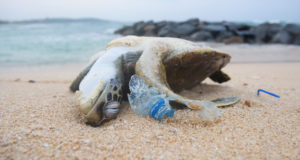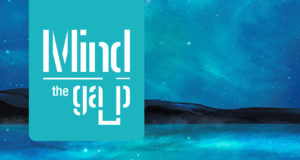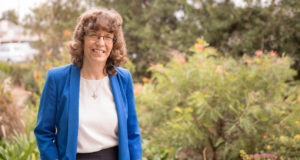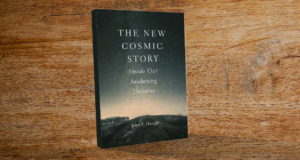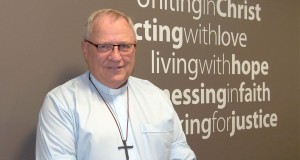“We really need to wrestle with how we engage with and understand human suffering.”
Stem cell biologist Dr Nathan Palpant talks to Dianne Jensen about the nexus between Christian faith and his cutting-edge research using human stem cells to understand disease and develop new therapies.
Most of us never forget that first look through the microscope at a pin prick of our blood. The magnified glimpse of the cells which make up our bodies is a breathtaking insight into the complexity of human life.
Now consider the job of Dr Nathan Palpant, a stem cell biologist at the University of Queensland’s Institute for Molecular Bioscience where he co-directs the Queensland Facility for Advanced Genome Editing and heads the Stem Cell and Cardiovascular Development Laboratory.
Nathan is one of an elite team of scientists using human stem cells and advanced bioengineering and genomic techniques to understand development of the earliest complete system to form in the embryo—the heart, vasculature and blood. By unlocking these complex mechanisms, scientists hope to produce cells capable of regenerating human tissue and understand the basis of diseases in order to develop new therapies.
“My interest in science stems from my constant curiosity about nature,” says Nathan, who moved to Australia with his wife and two children in 2015 after finishing a post-doctoral fellowship at the University of Washington’s Institute for Stem Cell and Regenerative Medicine.
“Why do I study cardiovascular development? I have no idea to be quite honest—these are simply the questions that I have always been curious about, and that’s been the key driver for me.
“I love discovering new perspectives on human life—it’s the sort of thing that surprises me every day and I find that enormously fulfilling. I get to use really extraordinary technologies to understand the biological basis of human life.”
Foundations of faith
The Palpant family lives in Brisbane and attends The Gap Uniting Church. They chose the Uniting Church after talking to others and looking at the theological positions of different denominations.
“The Uniting Church seemed to align with our sense of social justice and is theologically consistent with the view we were looking for both personally and for our kids,” says Nathan, who grew up attending the Presbyterian Church (USA).
“It wasn’t until I was in high school, bored by a sermon, that I read Philippians and at that particular moment for some reason it really grabbed me—it was my door into the Bible and the meaning it had for my life. I got a sense of this story’s relevance and impact, not just absorbing
it from a passive perspective but taking an interest personally.”
After graduating from Whitworth University, Nathan became a colleague of the Krista Foundation for Global Citizenship (Spokane, Washington) that helped fund a trip to Africa where he made videos about health care and disability and worked in a Nairobi slum. He also took two trips to Southern Sudan for medical mission work to acquire content for a documentary on the war—Sudan, the path to peace (produced by North by Northwest).
Brave new world
Nathan’s fascination with pushing scientific boundaries goes hand-in-hand with a drive to explore the ethical and theological dimensions of new medical technologies and opportunities.
He has co-edited and contributed to several books exploring human dignity in bioethics (Routledge), and suffering and bioethics (Oxford University Press).
His interest in bioethics is partly fuelled by public controversies around human pluripotent stem cells, a cell type central to his lab’s work at UQ. Pluripotent stem cells are used because of their remarkable capacity to differentiate into any cell type of the body. They can be derived from very early human embryos (human embryonic stem cells) or by re-programming somatic cells (like skin cells) back to a pluripotent undifferentiated state (human induced pluripotent stem cells).
Work in this area began with IVF research in the 1950s, when scientists began examining the stages of egg fertilisation in their quest to assist infertile couples, thus laying the basis for a range of reproductive technologies and cell therapies.
“Shinya Yamanaka won a Nobel Prize in Medicine in 2012 for the discovery of how to take what is called the somatic cell, the cells of the adult body, and re-program them back to an embryonic state,” explains Nathan. “We can use these re-programmed cells as a source from which to study human development and disease.”
Although these ground-breaking developments have opened the door to a wide range of potential interventions, Nathan believes that making good public policy has been hindered by our inability to articulate what it means to be human in the face of an increasing capacity to manipulate human existence through drugs, technologies and therapies.
The price of suffering
Nathan suggests that blindly following our desire to alleviate suffering may cloud our ability to make choices and embrace difference.
“I think we really need to wrestle with how we engage with and understand human suffering, especially as we become more technically capable of modifying the human mind or body—how does our understanding of suffering, its meaning and purpose in life, shape the way we engage with biomedicine?”
He points out that many of the decisions we make in life are inextricably tied to a risk of suffering. We take these risks because the value and meaning of these goods outweigh the suffering inherently tied to the loss of that good—and in fact these goods are valued in part because of their significant risk.
“Having children and investing in trusting relationships, accomplishing mental or physical feats with the body we are given and not through some pharmacologically manipulated state, and upholding our moral groundings in the face of pluralistic social pressures are some examples,” says Nathan.
“The sense of being fulfilled in life and protecting the goods that define our dignity is a high priority that we can often lose sight of when we are enticed by the next great medical advance. Medicine inherently orients its focus toward protecting and insulating our life from suffering. We’re risk averse.
“Understanding how to deal with human suffering needs a closer look, I think, in light of the values that bring meaning and purpose in life irrespective of the suffering we may incur on their behalf.”
Questions we need to ask
As science continues to expand the boundaries of medical care, what questions should inform our public debates?
“I find myself having these conversations with my colleagues as much as I do with the public,” says Nathan. “It’s a hard question because often technologies emerge with one purpose but can be re-purposed for objectives beyond their original concept. The field of bioethics struggles with these questions and on my pessimistic days I fear there is an inexorable shift toward the endless manipulation of human life that diminishes its meaning.
“I urge people to consider carefully how and when biomedicine and its increasing capacity to manipulate life ultimately degrades the substance of our existence. I believe that a more balanced view of suffering and its meaning in the human experience will bring into focus a healthier view of how we ought to engage with new technologies that increasingly enable us to control human life.”
Faith zone
As Nathan’s work probes ever deeper into the mysteries of human development, his theological roots drive him to understand how it all fits together.
“To be honest, I wrestle with a tension between acknowledging and believing in the presence of a sovereign God and our growing understanding of the chemical, biological and physical basis of the human experience,” says Nathan.
“I’m amazed at what I discover and what we learn from nature. This pulls me as much toward worship and awe as it does to questioning my faith as I learn more about how much we are shaped by social structures governed by genetic and environmental influences.
“I’m a struggler. I don’t know how these two merge. There’s a lot of mystery for me around reconciling faith and science … and I’m okay with this.”
Living in this discomforting zone between orthodoxy and revelation is part and parcel of being both scientist and Christian for this world-renowned researcher. It’s where the curious mind dwells.
 JourneyOnline
JourneyOnline


